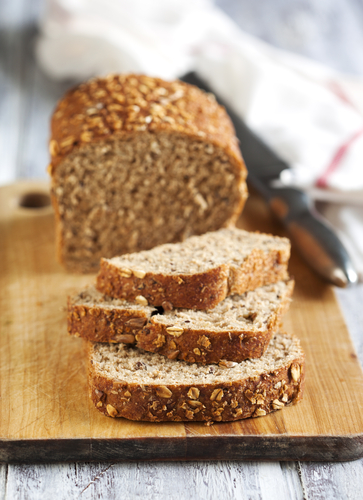By: Rebecca Coleman, RD
Diabetes affects an estimated 29 million Americans, with another 86 million at risk for developing the disease. Sadly, one in three Michiganders are at risk for prediabetes and more than a million Michigan residents have the condition.
While the statistics are overwhelming, there are six simple steps you can take to stabilize your blood sugar and eat healthier:
1. It is a common misconception that once your doctor says the word “diabetes,” you’ll never be able to eat carbs again. While this is untrue, since our brains and muscles need the energy from carbs to function, it is true that you should be mindful about the amount of carbs you are consuming.
Start by eating 45-60 grams of carbohydrates at each meal. Foods that contain carbs are fruit, milk, pasta, rice, cereal and bread, as well as starchy vegetables such as beans, peas, potatoes and corn. So dust off those measuring cups and watch your portions. Each of these suggested food servings contain 15 grams of carbohydrates:
- 1 small piece of fresh fruit (4 oz)
- 1/2 cup of canned or frozen fruit
- 1 slice of bread
- 1/2 cup of cereal
- 1/3 cup of pasta or rice
- 1/2 hamburger bun
- 1/2 cup of starchy vegetables
- 2/3 cup of plain fat-free yogurt or sweetened with sugar substitute
- 3 cups of air-popped popcorn, try this Lemon Parmesan Popcorn
2. When choosing carbs, pick as many whole grain or high fiber options as possible. This means wheat bread and pasta instead of white, sweet potato instead of white potato and brown instead of white rice. Choosing wisely will help you feel fuller for longer and increase your intake of other nutrients. 
3. Know how many calories you need. WebMD offers a chart to help you identify your suggested caloric intake or you can use one of the many apps on your smartphone to give you a starting point. This is important because eating excess amounts of food can cause your blood sugar to increase and contribute to weight gain. Additionally, being overweight or having a BMI in the obese range can increase your risk of developing diabetes.
 4. Fill up on non-starchy veggies such as greens, carrots, tomatoes and peppers. By doing this you’ll be increasing your intake of vitamins, minerals, fiber and promoting satiety. Aim to make half of your plate non-starchy veggies, which is easy to do with recipes such as this Apple Walnut Kale Salad.
4. Fill up on non-starchy veggies such as greens, carrots, tomatoes and peppers. By doing this you’ll be increasing your intake of vitamins, minerals, fiber and promoting satiety. Aim to make half of your plate non-starchy veggies, which is easy to do with recipes such as this Apple Walnut Kale Salad.
5. In addition to making healthy carb choices and watching portion sizes, it’s important to make healthy choices in other food groups as well. Choose lean cuts of meat, such as sirloin, chicken, turkey and fish, and low-fat or fat-free dairy. When cooking, use as little added fat as possible, and focus on lean cooking methods such as grilling, baking and broiling. Additionally, limit your salt intake. Cutting back to 2,400 mg of sodium per day can provide more health benefits. Avoid processed foods and flavor meals with herbs and spices instead of salt, like in these Rosemary Pork Chops.

Bonus tip: Increase your physical activity. The Diabetes Prevention Program Outcome Study found that even a modest amount of weight loss – about 5 to 7 percent of body weight – and increased physical activity, can delay or even prevent a diabetes diagnosis. A sedentary lifestyle increases the risk of developing diabetes.
While all of these changes may seem daunting, every step you take counts. Not only is smart eating essential in controlling blood sugar and preventing long-term complications, these healthy eating habits benefit the whole family.
For more information on diabetes prevention programs near you, visit http://www.priorityhealth.com/diabetes
About the Author: Rebecca Coleman, RD, is a registered dietitian and Health and Wellness Coordinator in the Wellness Department at Priority Health. She is passionate about helping families and individuals improve their health through nutrition education and nutritious food access. Rebecca is certified in adult weight management and has a background in both clinical nutrition and wellness programming.


